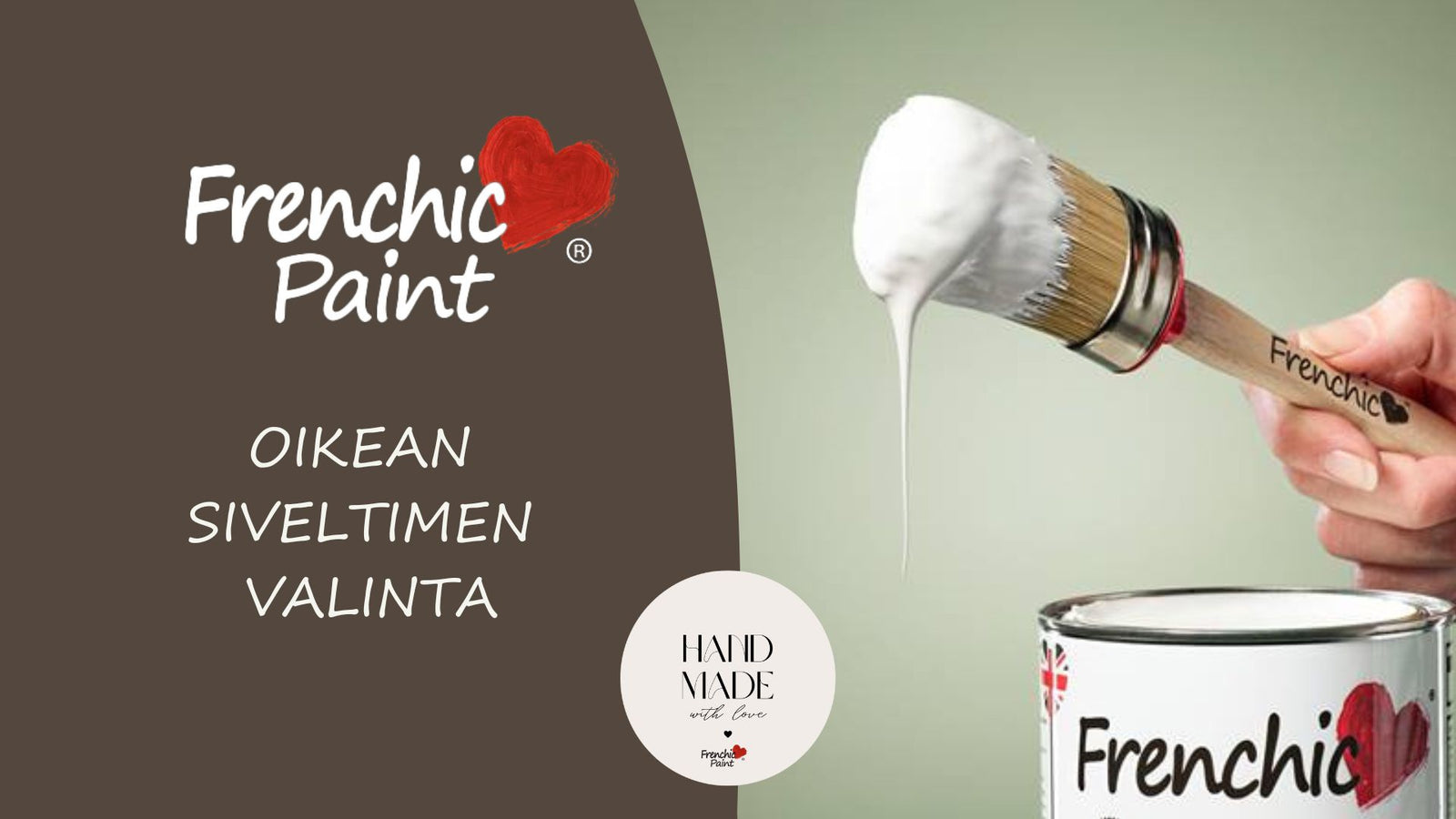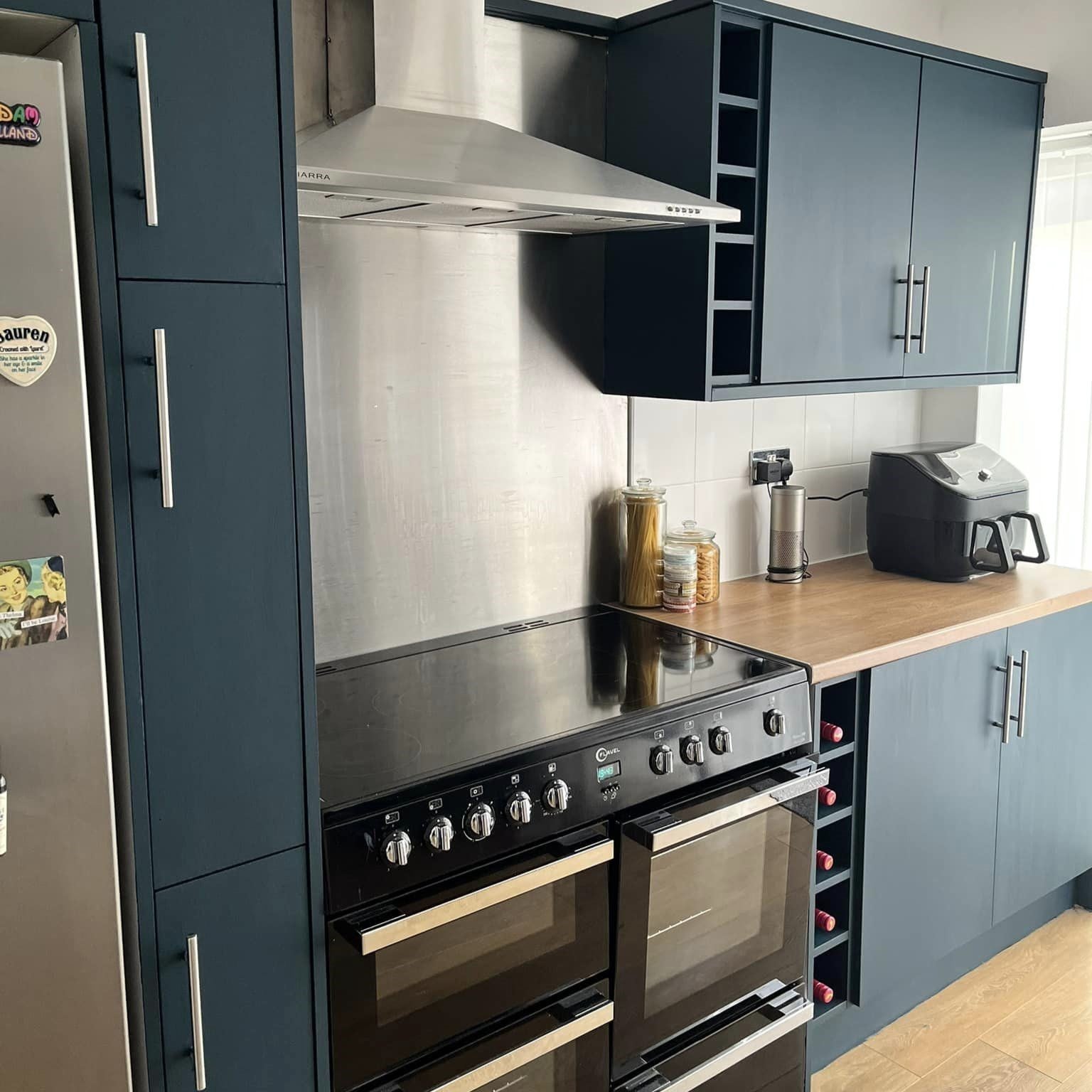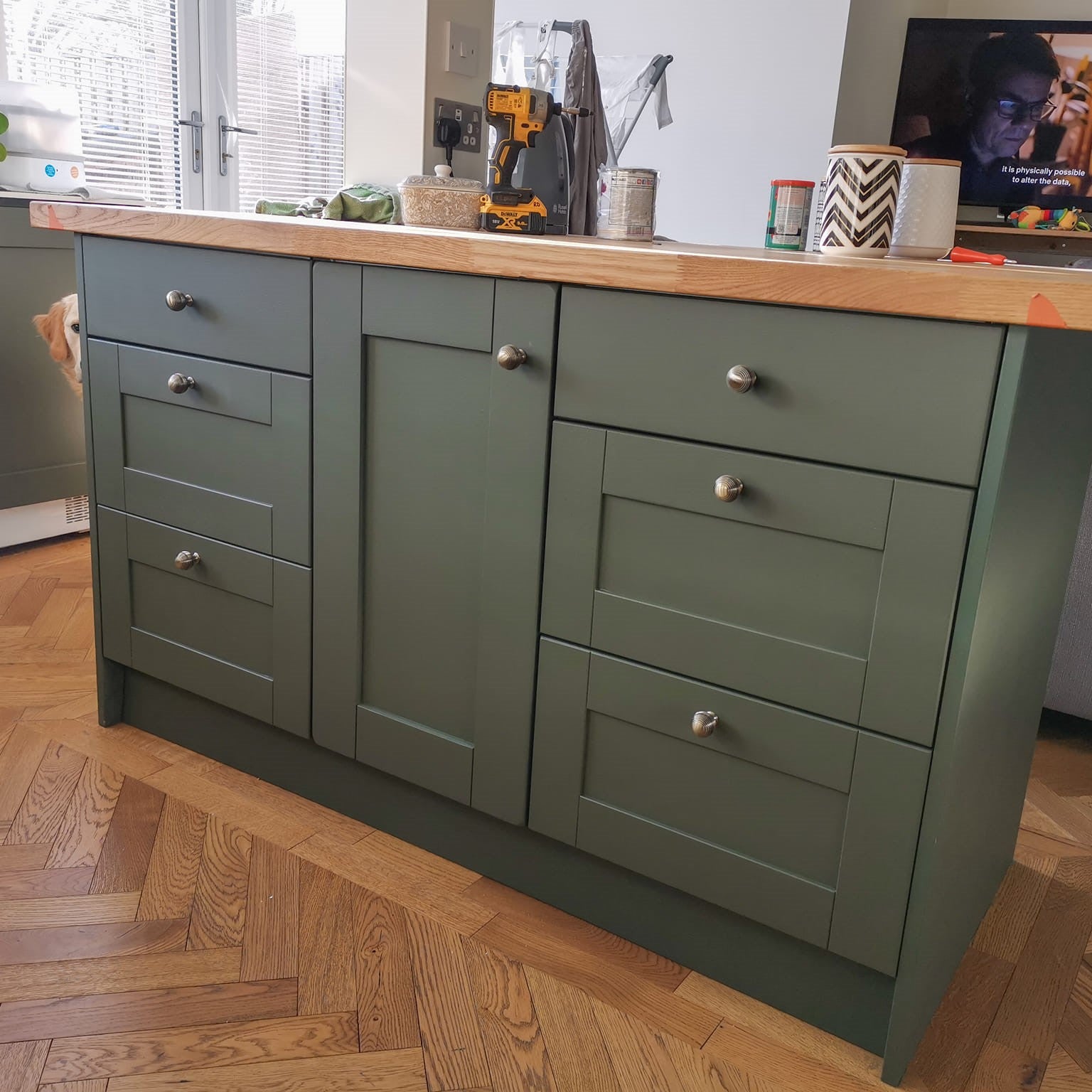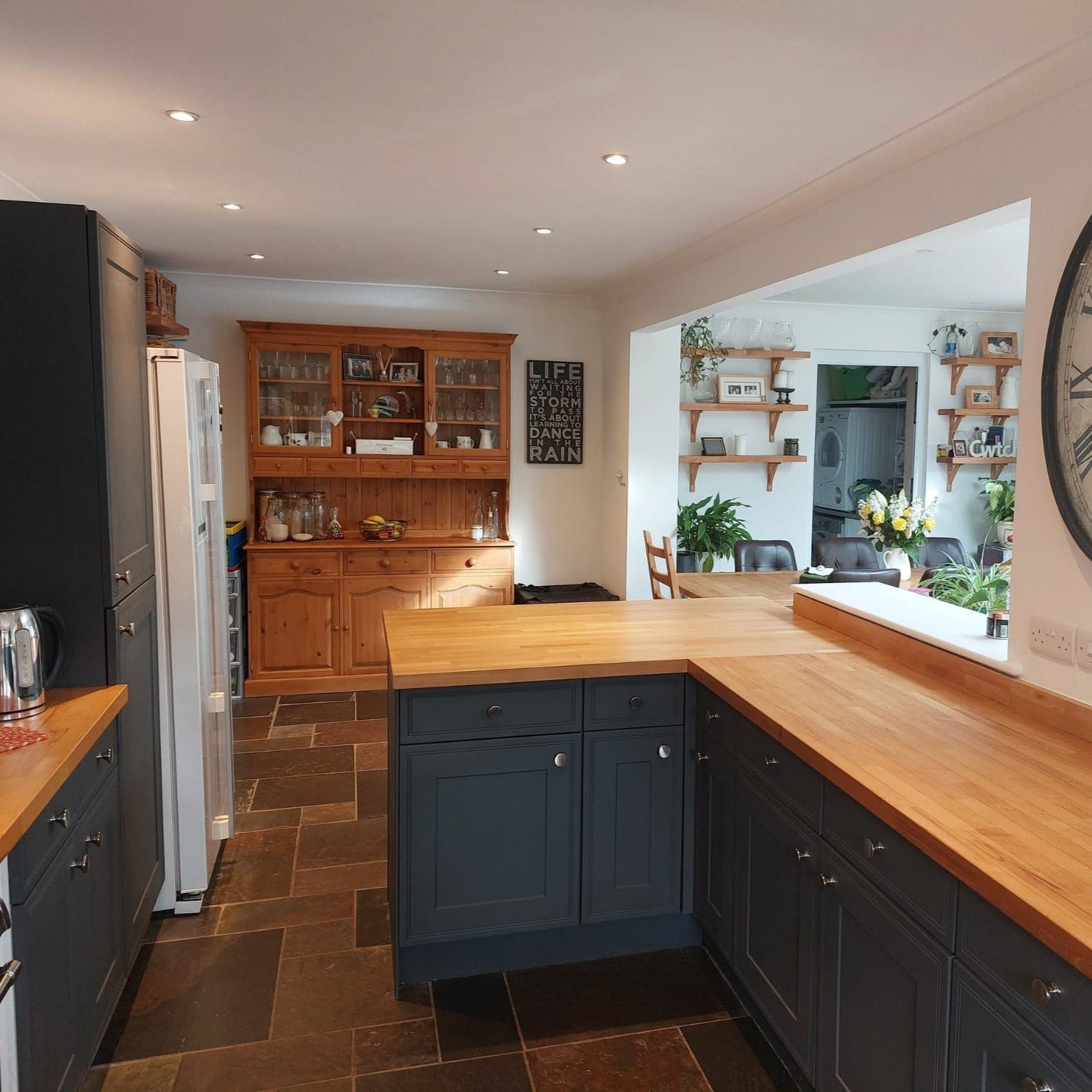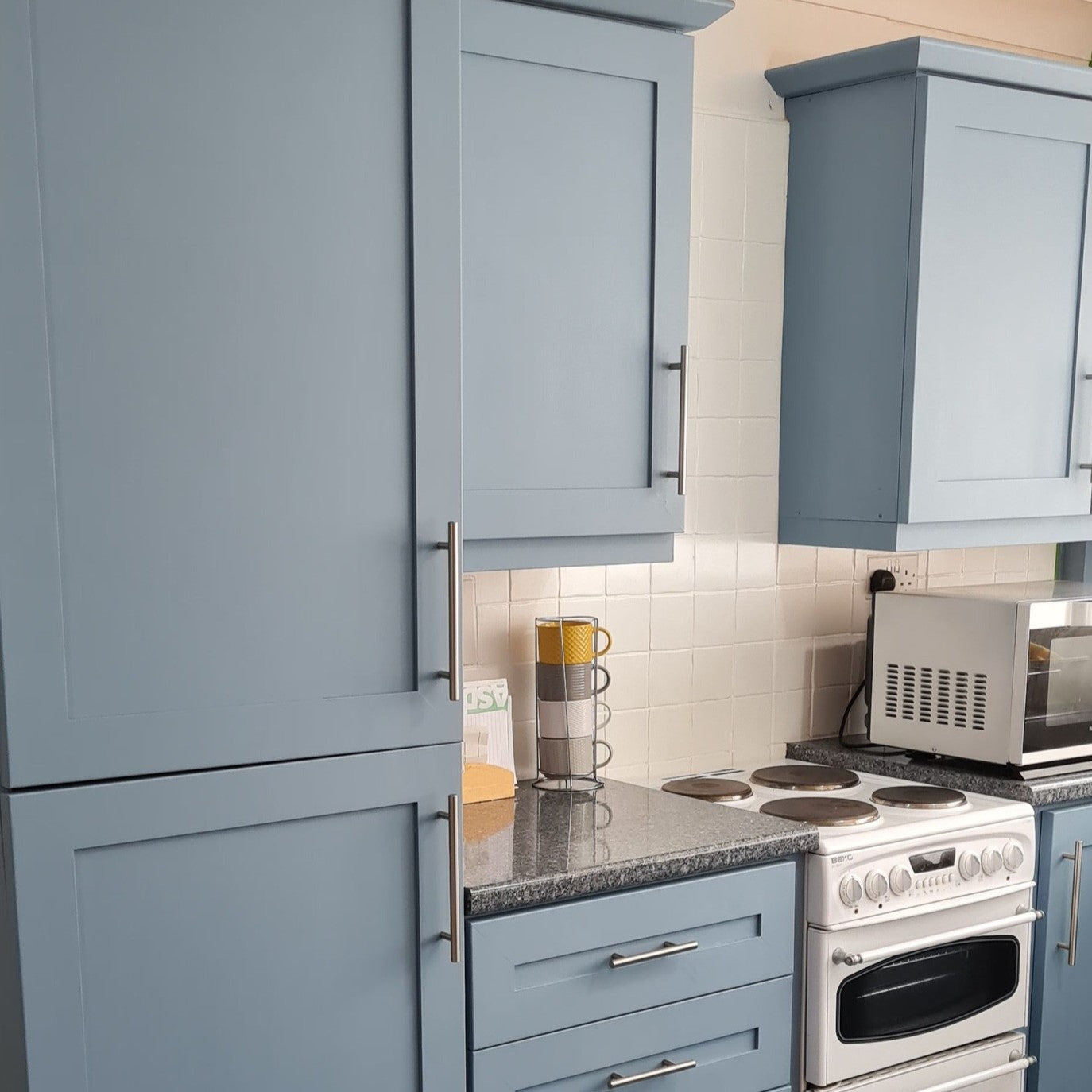It's really easy to achieve great results - especially when you know how!
A really beautiful and smooth surface - you need high-quality paint and good tools for that.
Read here how to choose the right brush or roller for your project.
Whether you are planning to renovate an old chest of drawers in a shabby chic style or paint a decorative mirror bold and personal, chalk paint / high-quality chalk paint intended for furniture painting is a good alternative compared to traditional paints.
Chalk paint, which has become more and more popular, is easy to apply, it dries quickly and you get a wonderful, finished surface. You can give your whole home a brand new look; for walls, furniture and decorations!
As a relatively new product on the market, chalk paint can have many questions about its use - especially the best ways to apply the paint and the best brushes for painting furniture with chalk paint. It's really easy to achieve great results with Chalk Paint - especially when you know how!
To make it easier for you to decide what kind of brushes to choose for furniture painting work, we put together a few points for you on how to choose the best brushes for your project. Enjoy painting and find your own style!


How do I choose my brush?
You may have seen how people paint with all kinds and shapes of brushes on painting videos. However, if you want the best possible end result, it is important to use a brush specifically intended for chalk painting, rather than the usual 'one-size-fits-all' supermarket brush.
-
Form
Traditionally, the best brush shape for chalk paint is an oval shape. An oval-shaped brush is used for painting and a round, stiffer brush for waxing.
Oval brushes come in different sizes; The smallest XS are well suited for small projects, the largest XL are at their best for painting a wall, for example.
The S-sized oval brush is a good universal size. You can conveniently paint chairs, bedside tables and smaller pieces of furniture with it.
The M-sized oval brush is perfect for painting larger surfaces and furniture, such as wardrobes, bookshelves.
Narrow corners, decorative wooden furniture; chairs and mirrors - for these projects you need narrow brushes like Detailing Brushes. Wide brushes are suitable for projects where you paint large and flat surfaces with long brush strokes.
Some people like a roller and others a brush. Try different tools, and you will get to know what kind of impression the tools you choose give in your painting style. Test tools, especially before a larger job, such as painting kitchen cabinets.
-
Bristle
Brushes use two types of bristles - synthetic and natural bristles. Both are good for chalk painting, so we combined them with the same brush. A carefully thought out mixture of synthetic and natural brush gives the best possible final result when painting furniture.

-
Brush width
When choosing a brush, you will notice that there are brushes of many sizes. You can see the width of the brushes in the Frenchic series, but we have also named the oval brushes for your selection to make it easier:
The XL is the largest oval Frenchic brush - it's perfect for painting large surfaces, such as walls.
The M size is a medium-sized oval brush and is suitable for common projects such as painting doors, cabinets and chests of drawers.
The S size is well suited for painting chairs, frames and mirrors. The S-sized brush can fit another 250ml jar directly into the painting. (M size is too big for a small jar)
The XS size is the smallest of all - it's perfect for our smaller sample jar and for painting small projects and edges.

Does the choice of brush matter?
Choose the right tool for your project. If you are wondering how to get a beautiful and even surface, the most important thing is that you choose a high-quality brush or roller.
You invest a lot of time and effort in the painting work, the end result should not be sacrificed with bad tools. A new brush or roller is your best friend when it comes to painting - you'll notice it!
Sometimes a cheap solution can be tempting, but the choice can backfire in the end result and you notice that the finish is not what you hoped for. The bristles that come off from cheaper brushes during a painting project can completely ruin the surface.
Can I use a regular brush for chalk painting?
Although there is no rule about the model of the brush, it is still worth considering quality rather than price. It is a pleasure to paint with a high-quality brush.
Maybe you would be tempted to use old brushes from storage or the garage? Worn, dirty and old brushes - their bristles do not give the same end result as high-quality brushes.
The oval brushes from the Frenchic Paint series, hand-picked in Italy, are made from a thoughtful blend of synthetic and natural bristles and are perfect for chalk paint.
How can I avoid brush marks in chalk painting?
You can achieve really wonderful results with chalk paint - especially if you know how. Whether you want a worn, personal Shabby Chic style or a perfectly beautiful and smooth surface - you can do all this with chalk paint.
This is how you prevent brush marks on the paint surface:
- Sunlight - Do not paint in direct sunlight, then the paint dries far too quickly and can crack and brush marks are easily visible.
- Too much paint in the brush - Do not dip the brush into the paint too deeply - just a light touch under the paint surface and paint with a light hand, long strokes. Paint layers that are too thick do not dry as the manufacturer intended, and Overpainting thick layers can ruin both layers.
-
Too little paint in the brush - You shouldn't skimp on the amount of paint: if there isn't enough paint, the paint can't be leveled as intended.
- Water – A paintbrush moistened with water or a paint surface lightly moistened with a spray bottle may be your style. This style has a slight effect on drying and that means there are little or no brush marks left. Thinned paint can also be your technique, but of course it affects coverage. Always thin in another container, not in a paint can. Frenchic series paints do not need to be thinned.
- Follow the instructions from -malta and wait according to the instructions between layers to dry. You can find the drying interval of the layer on the side of the paint can of the series you have chosen.
- Light hand - do not press or rub the brush on the surface of the furniture if you want to avoid brush marks. Paint with a light hand.
- Grinding –However, if brush marks remained on the surface, sand them off lightly, wipe the surface clean and paint again.
- Brushes - High-quality brushes, made for chalk paint - try it and you'll notice the difference!
- Practice - Experiment, have fun painting and be creative - Practice makes perfect!
Take care of your brushes
Wash the brush with warm water before use. Take good care of your beautiful and practical brush at the end of every painting project.

Easy And Effective Brushes For Chalk Painting
Finding the right paintbrushes for your project doesn't have to be difficult. At Frenchic Paint, we stock a range of Italian, handcrafted, Oval brushes for chalk paint. Made with a careful choice of natural and synthetic bristles, our brushes can absorb plenty of paint yet maintain their brilliant shape time after time.
With durable, affordable brushes that work best with chalk paint, we can help you skip the hassle of finding the right brushes. If you're planning on doing a lot of projects that require chalk painting, don't hang around. Grab a few of our brushes and get painting. We know that you'll enjoy using them as much as we do!

